Mastering How to Map Facial Hair Grain
Mapping the grain of your FACIAL hair is an essential yet often overlooked aspect of achieving a close, smooth, and irritation-free shave.
Whether you’re a novice or a seasoned shaving veteran, understanding the growth pattern of your facial hair – often referred to as the ‘grain’ – can significantly enhance your shaving experience.
In this article, I aim to demystify the process of facial hair grain mapping, outlining why it’s important and providing a step-by-step procedure to help you map your facial hair grain accurately.
This article will delve into the intricacies of facial hair growth, and explain how grain direction influences the comfort and effectiveness of your shave.
I will also discuss how various types of RAZORS interact with different growth patterns and why grain mapping can be particularly beneficial for guys with sensitive skin or issues such as ingrown hairs.
Understanding your facial hair grain is much more than just knowing which way your beard grows. It’s about aligning your shaving habits with the unique features of your facial hair.
By the end of this article, you’ll have all the information and tools necessary to accurately map your facial hair grain, enabling you to make more informed decisions about your grooming routine.
It’s time to take your shaving experience to a new level, and it all starts with understanding the grain of your facial hair. Let’s embark on this enlightening journey.
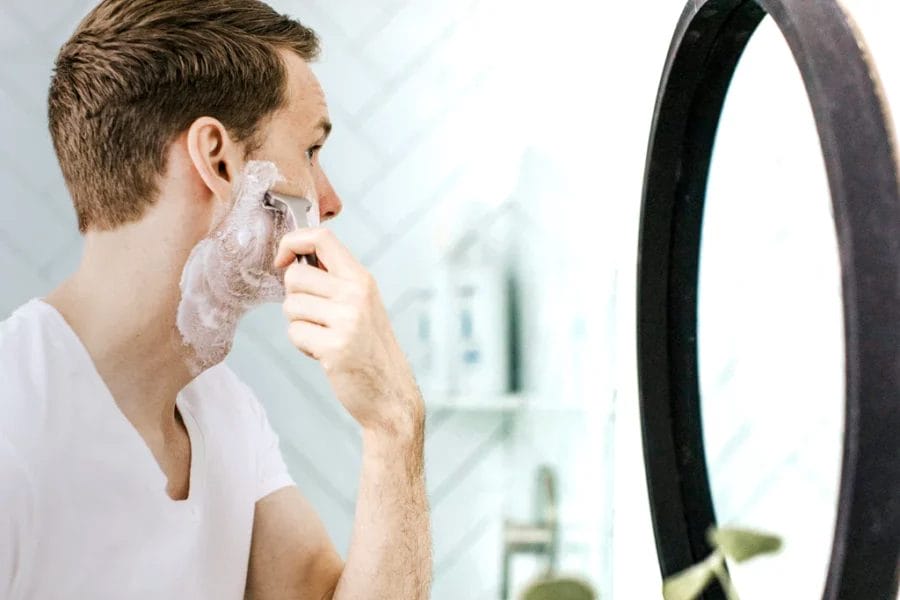
What Is Facial Hair Grain
“Facial hair grain” refers to the direction in which the hair on a person’s face grows. Each person’s facial hair grain is unique, and it’s important to understand your own if you shave your face.
Understanding your facial hair grain can help reduce IRRITATION, and ingrown hairs, and achieve a closer, smoother shave.
It’s generally recommended to shave “with the grain,” or in the direction of hair growth, especially for the first pass with a razor, as it can be less irritating to the skin.
On subsequent passes, you might choose to go “across the grain” (perpendicular to the direction of growth) or “against the grain” (opposite the direction of growth), depending on your skin sensitivity and the closeness of the shave desired.
You can determine the direction of your facial hair grain by letting your beard grow out for a day or two and then feeling it with your hand.
The direction that feels smooth is with the grain, and the direction that feels rough is against the grain.

The Basics of Mapping Facial Hair Grain
Identify the Direction of Growth
One of the first steps I take when it comes to mapping facial hair grain is recognizing the direction in which the hair grows.
I gently brush my fingers across the client’s facial hair, paying close attention to the way the hair lies.
In some cases, hair may grow straight down, while in others, it may grow in a diagonal or even circular direction. It’s a skill that requires a lot of practice, but with time, you’ll find it comes naturally.
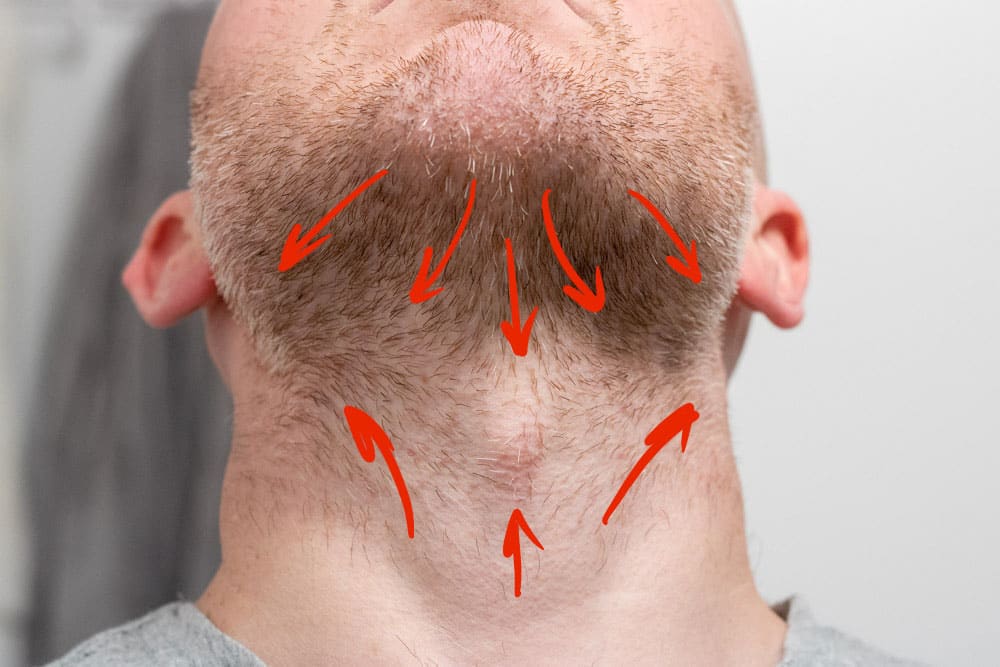
Feel for Roughness and Smoothness
Next, I focus on determining the rough and smooth areas. How to map facial hair grain effectively involves a lot of tactile feedback.
I run my hand against the grain of the hair, from the bottom to the top, and then along the grain, from top to bottom.
The direction that feels rougher is typically against the grain, while the direction that feels smoother is usually along the grain.
This method is particularly helpful for identifying swirls and patches of hair that grow in different directions.
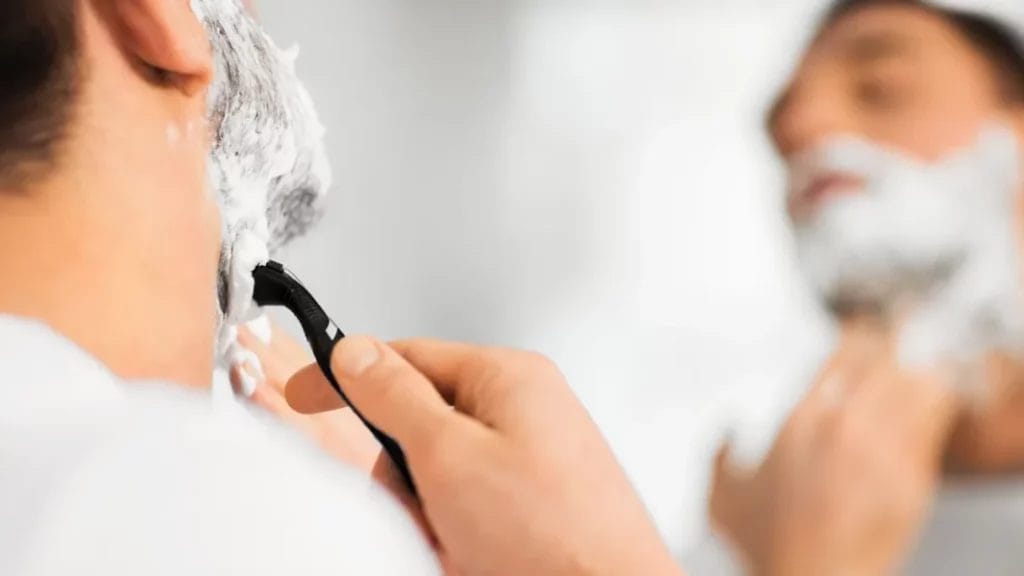
Map Out Different Sections
When I’ve gotten a good sense of the overall direction of growth, I start to divide the face into different sections.
These sections can be as large or as small as needed, based on the complexity of the growth patterns.
For instance, one side of the chin might have hair growing in a completely different direction than the other. By breaking it down, it’s easier to manage and understand the overall growth pattern.
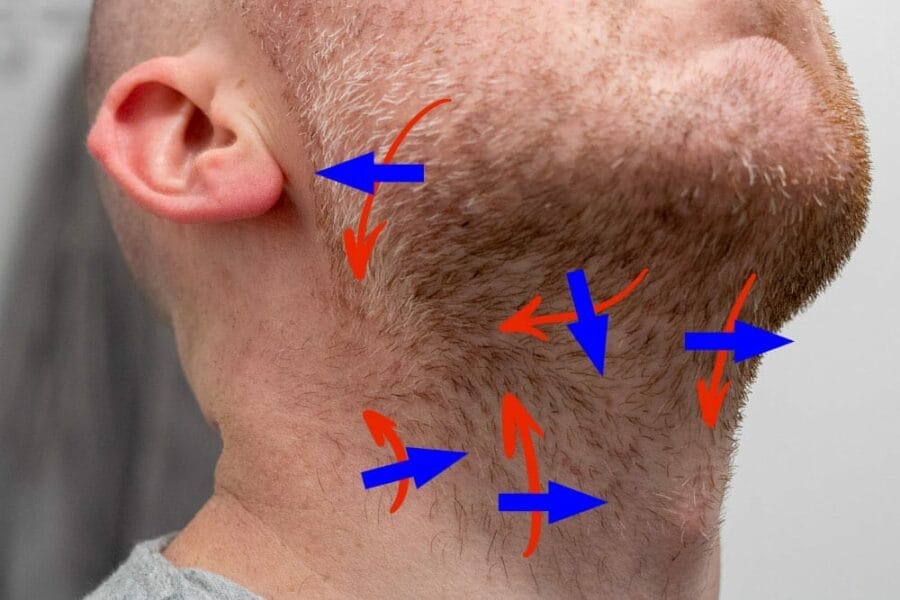
Note Changes in Growth Patterns
Something else that’s important when learning how to map facial hair grain is to keep an eye out for changes in growth patterns.
As a hairstylist, I’ve noticed that hair growth patterns can change over time, often due to factors such as age, hormones, or even injuries.
It’s crucial to update your understanding of a client’s hair grain periodically.
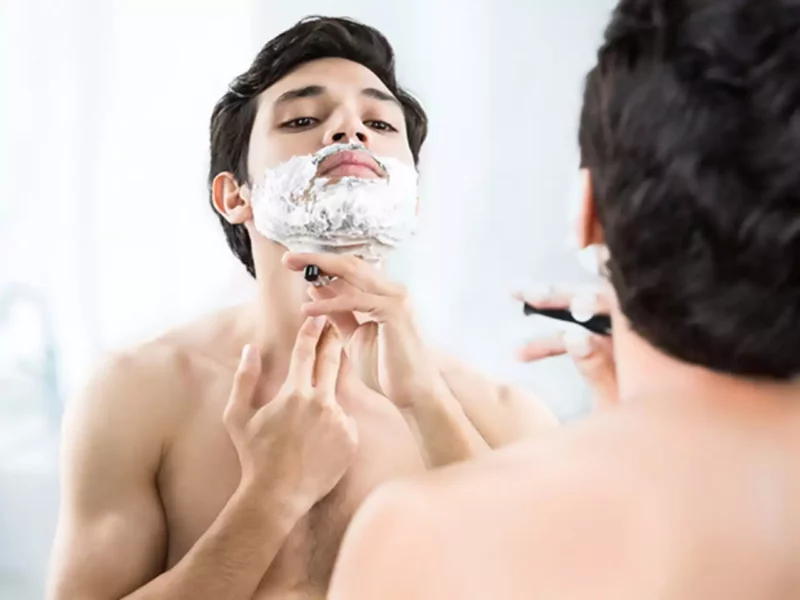
Use a Diagram for Reference
I find it extremely useful to use a diagram as a reference when mapping facial hair grain.
Sketching out a simple outline of the face and marking the direction of hair growth on it can provide a clear and concise visual guide.
This is especially beneficial when dealing with complex growth patterns or when the client’s facial hair is particularly dense.
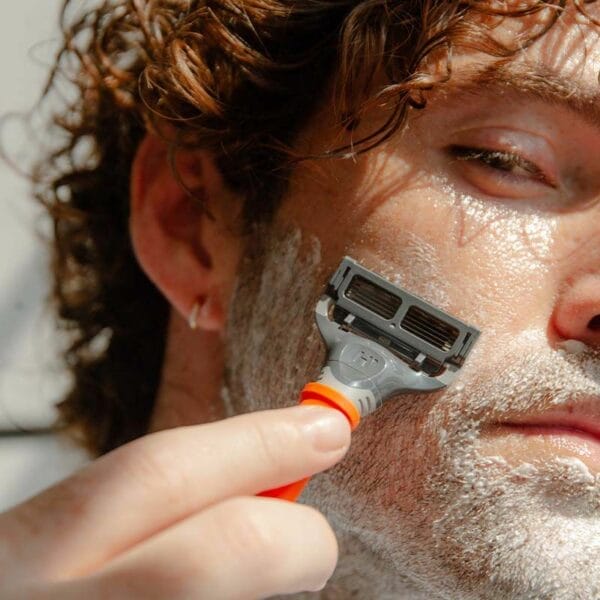
Regularly Update Your Map
It’s important to remember that facial hair mapping is not a one-time task. Just like the hair on our heads, facial hair can change over time.
I always advise my clients to come in for regular appointments so I can monitor any changes and adjust the mapping as needed.
By doing this, I can ensure that every shave or trim is as effective and comfortable as possible.
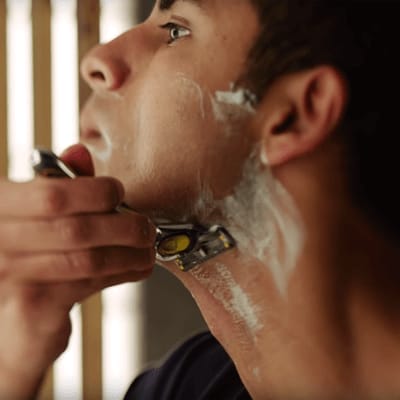
Step-by-Step Guide to Mapping Your Facial Hair Grain
Clean Your Face
As a professional hairstylist, I always recommend starting with a clean canvas. Before you begin MAPPING your facial hair grain, it’s essential to thoroughly cleanse your face.
This will remove any dirt, oil, or debris that could interfere with your ability to accurately assess your hair growth patterns.
Use a gentle facial CLEANSER suitable for your skin type, and make sure to rinse with lukewarm water to avoid irritating your skin.

Let Your Facial Hair Grow
To properly map your facial hair grain, you’ll need to allow your beard or stubble to grow out for a few days.
I recommend waiting at least three to five days after shaving, as this will give you a better sense of the direction in which your hair naturally grows.
Keep in mind that hair growth patterns can vary significantly from person to person, so don’t be discouraged if your facial HAIR takes a bit longer to grow.

Examine Your Facial Hair
Once you’ve allowed your facial hair to grow for a few days, it’s time to examine it closely.
To determine how to map your facial hair grain, start by looking for any patterns or directions in which your hair tends to grow.
Pay close attention to the angles and curves of your hair, as these can provide valuable clues about your facial hair grain.
If possible, use a magnifying mirror or ask someone to help you examine your face, as this can make it easier to spot any subtle patterns.
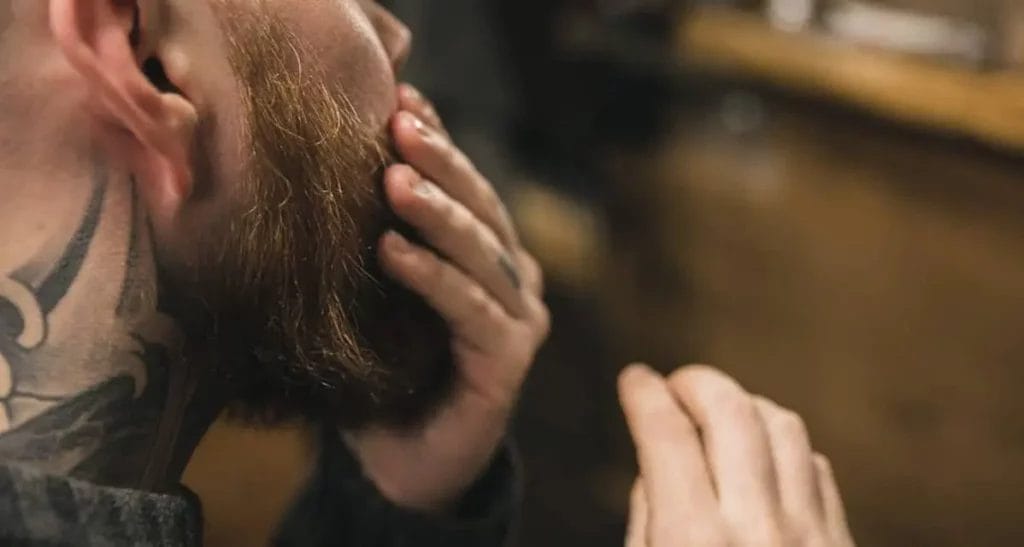
Mark the Directions
Now that you’ve identified the patterns in your facial hair growth, it’s time to mark the directions.
To do this, you can use a washable marker or even a gentle eyebrow pencil to draw arrows on your face, following the natural growth patterns you’ve observed.
I find that it’s helpful to mark the different sections of your face separately, such as the cheeks, chin, and neck, as this can make it easier to create an accurate map later on.

Create the Map
With all the necessary information gathered, you can create a detailed map of your facial hair grain.
Using a piece of paper or a digital drawing tool, sketch out an outline of your face, and then transfer the arrows and markings from your face onto the map.
Be sure to label each section of your face, as this will help you remember which areas correspond to which growth patterns.
Once you’ve completed your facial hair grain map, you can use it as a reference when shaving, trimming, or styling your beard.
By following the natural growth patterns of your facial hair, you’ll be able to achieve a smoother, more comfortable shave, and reduce the risk of ingrown hairs or irritation.
Common Mistakes While Mapping Facial Hair Grain and How to Avoid Them
I’ve encountered numerous clients who struggle with mapping their facial hair grain correctly. This often leads to issues such as skin irritation, ingrown hairs, and an uneven shave.
Here, I’ll share some common mistakes and how to avoid them to achieve a better shave.
1. Incorrect Shaving Direction
One of the biggest mistakes I’ve noticed is that clients shave against their hair grain. This often results in a less comfortable and less efficient shave.
To map your facial hair grain, run your fingers gently across your facial hair growth to determine the direction in which the hair grows.
Ensure you shave with the grain to avoid irritation and achieve a smoother result.
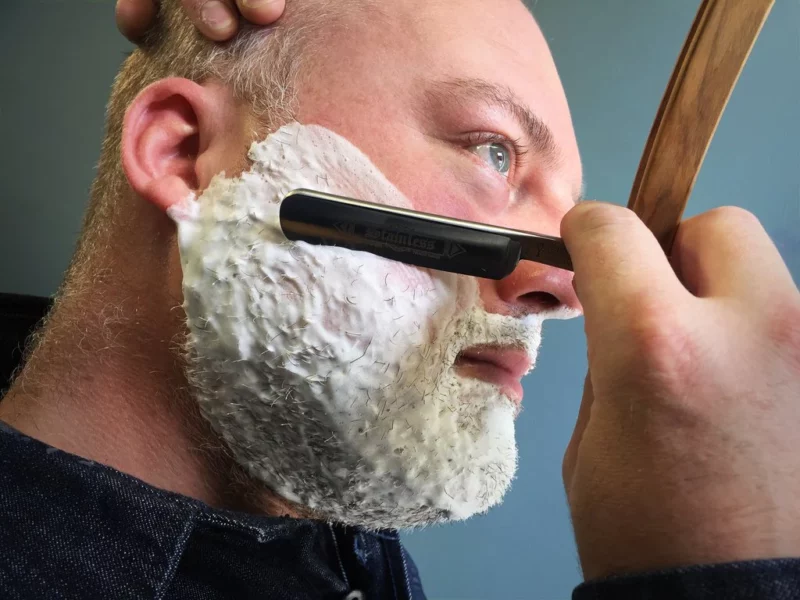
2. Insufficient Skin Stretching
Many clients neglect the importance of skin stretching while mapping facial hair grain.
When the skin isn’t stretched properly, it can be difficult to accurately assess the hair growth pattern.
To avoid this mistake, make sure to gently pull your skin taut before running your fingers over the hair. This will provide a clearer picture of the grain direction.

3. Rushing the Process
Mapping facial hair grain takes time and patience, especially for men with thick or curly hair.
I always advise clients to take their time when mapping, as rushing can lead to inaccurate results.
To get the most accurate map, make sure to spend a few minutes thoroughly examining your hair growth pattern.
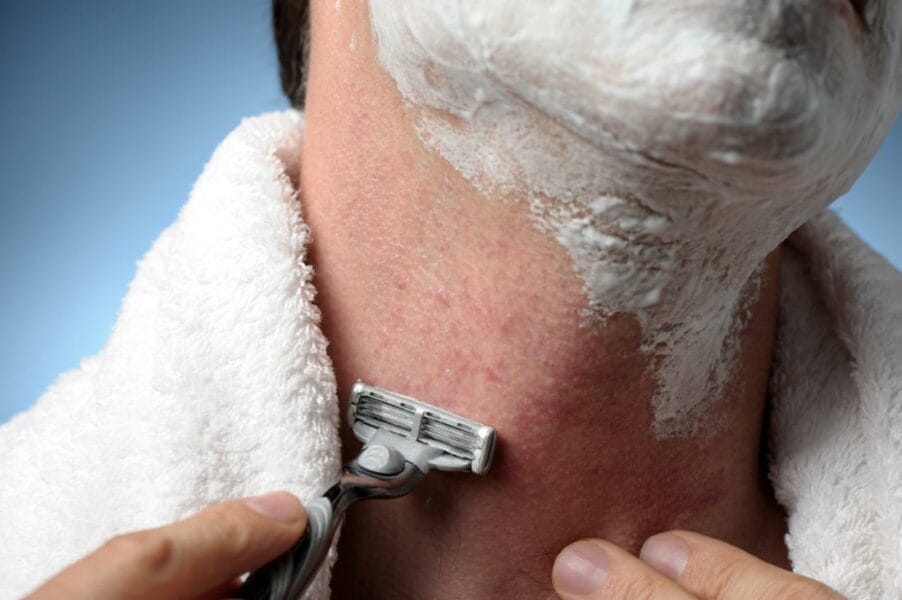
4. Poor Lighting Conditions
Another common issue I’ve encountered is poor lighting conditions while mapping facial hair grain.
It’s crucial to have adequate lighting in order to clearly see the direction of hair growth.
If possible, try mapping your facial hair in natural daylight or with bright artificial lighting to ensure you can see the hair grain clearly.
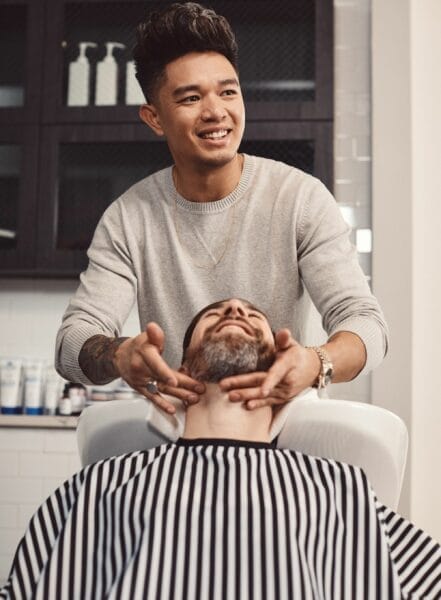
5. Skipping Areas of Growth
Some clients may inadvertently skip areas of facial hair growth when mapping.
This can lead to an incomplete understanding of the hair grain, making it challenging to achieve a comfortable and efficient shave.
To avoid this, make sure to map all areas of your facial hair, including any patchy or sparse areas.
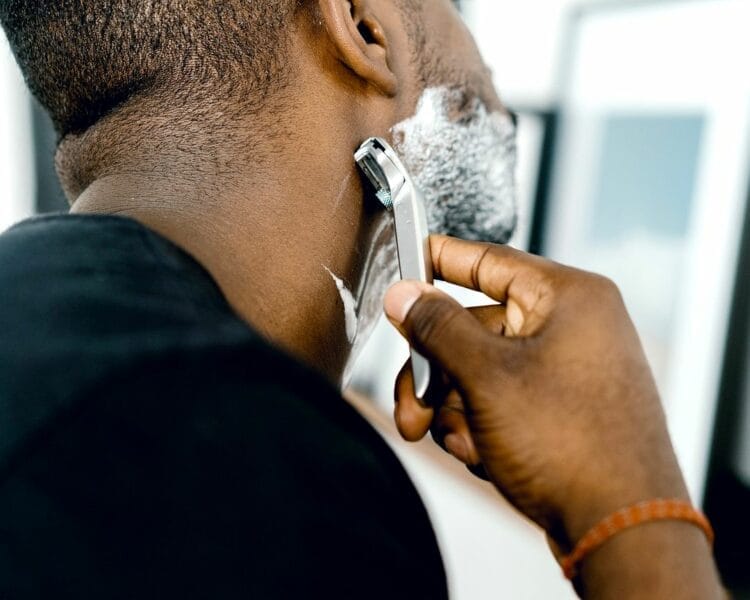
6. Inaccurate Mapping Techniques
Using inaccurate techniques to map facial hair grain can also lead to mistakes.
As a professional hairstylist, I recommend clients use a gentle touch and take their time when assessing the direction of hair growth.
You may even find it helpful to use a small comb to brush the hair in different directions to better determine the grain.

7. Neglecting to Update the Map Regularly
Lastly, it’s essential to update your facial hair grain map regularly, as hair growth patterns can change over time.
I suggest clients reassess their hair grain at least every few months to ensure they are always shaving in the most effective direction.
This will help maintain a comfortable and efficient shave while minimizing irritation.
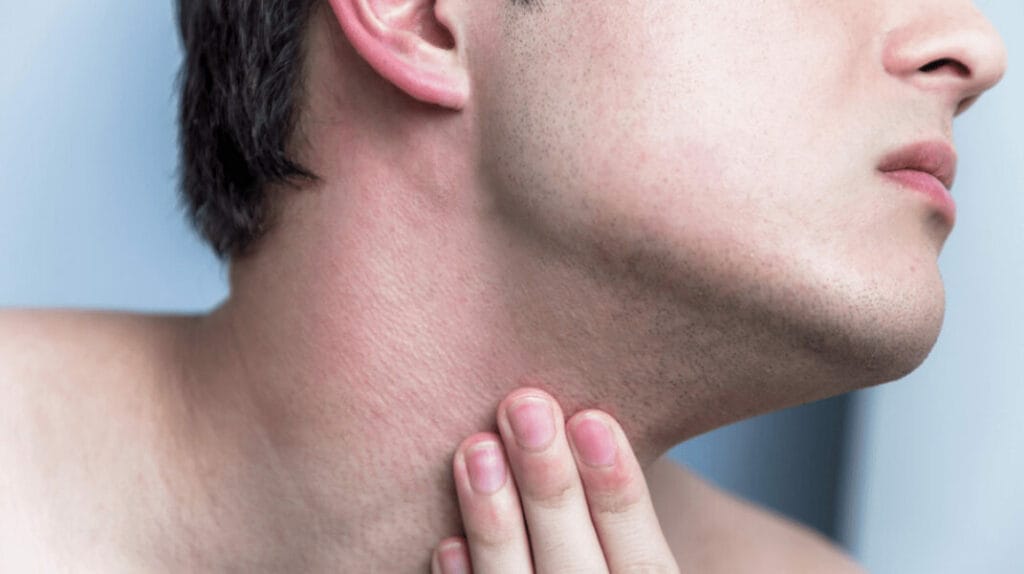
Benefits of Mapping Your Facial Hair Grain
Improved Shaving Experience
I have seen firsthand the difference that understanding your facial hair grain can make.
When you know how to map your facial hair grain, you can optimize your shaving technique for a smoother, more efficient shave.
I’ve witnessed many clients who, once they’ve mastered this skill, experience a significant improvement in their shaving routine.
By following the natural growth patterns of your facial hair, you’ll find that your razor glides more easily and cuts the hair more effectively, resulting in an overall superior shaving experience.

Less Irritation and Ingrown Hairs
One of the primary concerns for my clients is the irritation and ingrown hairs that often accompany shaving.
By learning how to map facial hair grain, you can greatly reduce these common issues.
When you shave against the grain, the hair is cut at a sharp angle, increasing the likelihood of it growing back into the skin, and causing ingrown hairs.
Shaving with the grain, on the other hand, cuts the hair more evenly and minimizes irritation.
As someone who has helped numerous clients with their grooming needs, I can confidently say that understanding your facial hair grain will lead to a more comfortable and enjoyable shaving experience with fewer side effects.
Better Beard Maintenance
As a hairstylist, I am often asked for advice on maintaining a well-groomed beard.
An essential aspect of proper beard care is understanding the direction of your facial hair growth.
When you know how to map facial hair grain, you can more effectively TRIM and style your beard, ensuring that it looks its best at all times.
By following the natural growth patterns, you can easily achieve a more uniform length and reduce the risk of uneven or patchy areas.
Additionally, knowing your facial hair grain can help you decide on the best beard style to suit your individual growth pattern.
This knowledge is invaluable for anyone looking to maintain a POLISHED and well-kept beard.

Conclusion
Understanding how to map facial hair grain has numerous benefits, including an improved shaving experience, reduced irritation and ingrown hairs, and better beard maintenance.
As a professional hairstylist, I cannot stress enough the importance of this skill in your GROOMING routine.
By investing the time to learn and understand your facial hair growth patterns, you will undoubtedly reap the rewards in the form of a more comfortable and polished appearance.
FAQs
Which way is the grain on facial hair?
When discussing facial hair, the term “grain” refers to the direction in which your hair naturally grows.
As a professional hairstylist, I can tell you that it varies greatly among individuals.
Some may have hair growing in a single direction across the entire face, while others may find their hair growing in different directions on different parts of their face.
Understanding the grain of your facial hair is crucial for effective and comfortable shaving.
It can help to reduce razor burns and ingrown hairs. Generally, if the hair lies flat when you run your hand over it, you are going with the grain.
Conversely, if you feel resistance or a kind of prickly sensation, you’re going against the grain.
How do I find the grain of my hair?
As a hairstylist, I often guide my clients on how to find the grain of their hair. It’s a relatively straightforward process.
After a day or two of not shaving, run your fingers across your beard. The direction that feels smooth is the grain or the direction in which your hair grows.
It may be helpful to do this exercise in front of a mirror. If you feel any resistance, that’s going against the grain.
Be sure to check different areas of your face, as the grain can change in different areas. Remember, understanding how to map facial hair grain is vital for a smoother, more comfortable shave.
How do you map your face for shaving?
Mapping your face for shaving is a critical step in ensuring a close, comfortable shave. It’s something I always recommend to my clients.
Start by letting your facial hair grow out for a day or two. Then, using your fingers, feel the direction of growth in each area of your face.
I recommend starting from the sideburns, going down to the cheeks, chin, and neck, and noting the direction in each section.
You might find it useful to draw a diagram or take notes to remember the grain pattern. This map will help guide you when you shave, reducing the risk of irritation and cuts.
How can I change the grain direction of my beard?
As a professional, I’ve had clients ask if they can change the direction of their beard’s grain.
While it’s nearly impossible to permanently alter your hair’s natural growth direction, there are some techniques to temporarily manipulate it.
Regular brushing or combing in the desired direction can train your beard to lay in that direction over time.
However, this requires consistency and patience. Beard oils and balms can also help to soften the hair and make it more manageable.
Remember, it’s crucial to understand how to map facial hair grain before attempting to change its direction.
Do you shave facial hair with or against the grain?
The golden rule I share with my clients is to always shave with the grain.
Shaving against the grain can lead to a closer shave, but it significantly increases the risk of irritation, razor burn, and ingrown hairs.
If a closer shave is your goal, I recommend a multi-pass technique. Start by shaving with the grain, then re-lather and shave across the grain (sideways), and only if your skin can handle it, shave against the grain.
But remember, it’s essential to know how to map facial hair grain before starting this process. This way, you can adjust your technique to suit your unique facial hair growth pattern.
References:
Facial hair is hair grown on the face, usually on the chin, cheeks, and upper lip region. source
Many people dream of growing a thick, luxurious beard or a stylish mustache. source
Khamis Maiouf is a professional barber who graduated from Hinckley College in England with a degree in hairdressing. He has also won several barbering contests and successfully operated a barbershop for the last two decades. As a skilled hair stylist for 20 years, his goal is to teach others how to achieve a beautiful appearance through their hairstyles.
